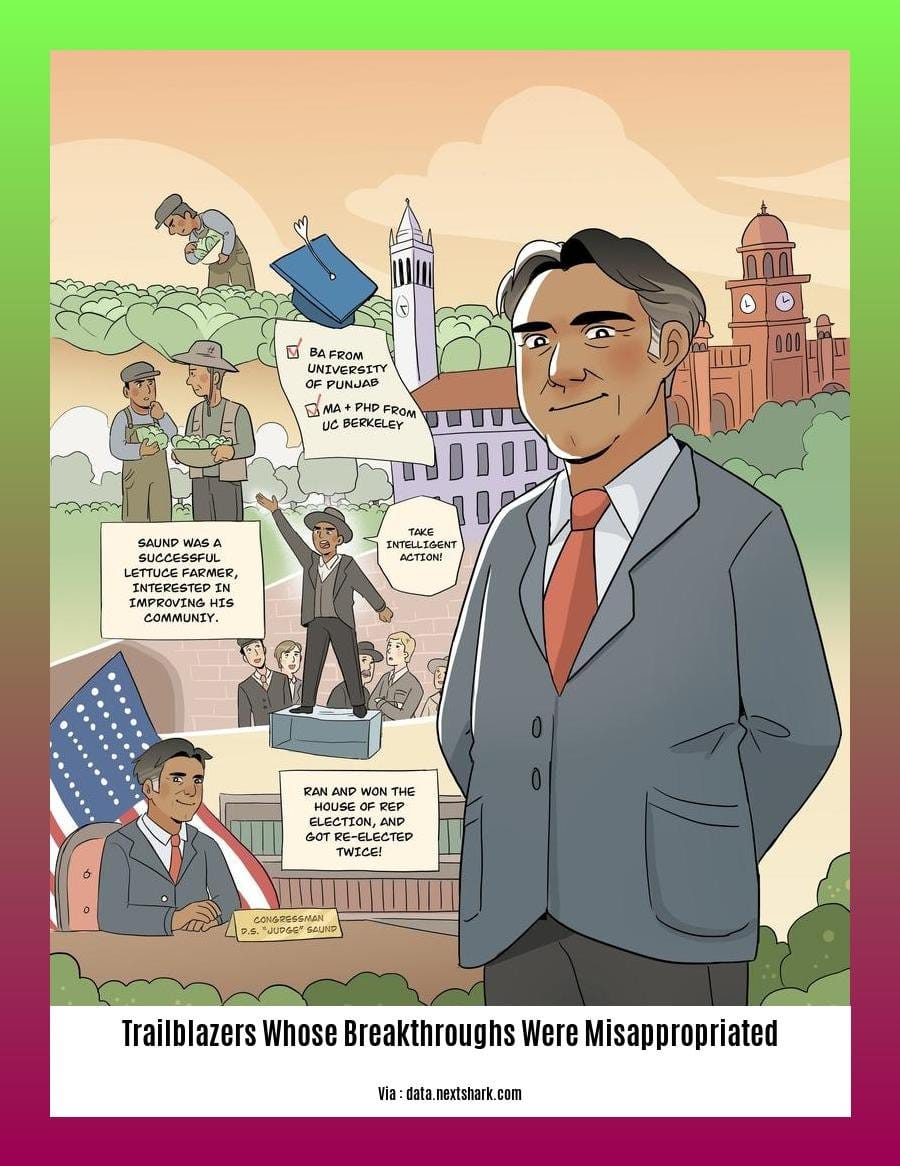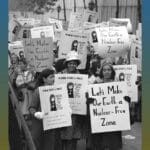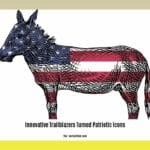A History of Trailblazers Whose Breakthroughs Were Misappropriated: Throughout history, trailblazers whose breakthroughs transformed the world have often been marginalized or forgotten. This article unveils the stories of these unsung heroes, exploring the circumstances surrounding their inventions and the injustices they faced.
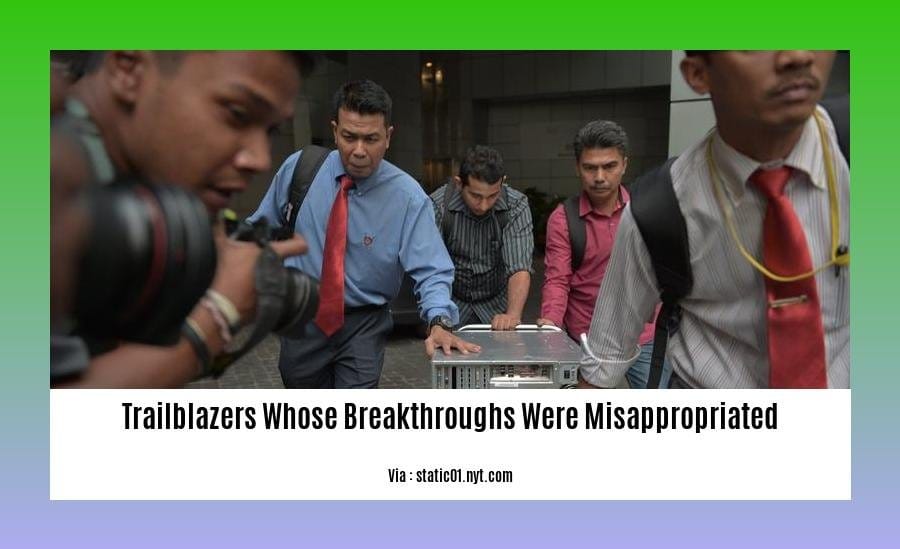
Key Takeaways:
- Jesse L. Brown: First African American naval aviator to complete flight training.
- Jo Ann Robinson: Organized the Montgomery Bus Boycott, a pivotal event in the civil rights movement.
- Madam C.J. Walker: Self-made millionaire, innovator of hair care products for African Americans.
- Mark E. Dean: IBM engineer instrumental in the development of personal computers.
- Thomas L. Jennings: First African American to receive a patent in the US, for an early form of dry cleaning.
Trailblazers Whose Breakthroughs Were Misappropriated
Unveiling the Hidden Truths
Innovation has always been the driving force behind human progress. But behind every groundbreaking idea, there often lurks a tale of injustice – stories of trailblazers whose breakthroughs were misappropriated.
The Plight of Unsung Heroes
Throughout history, countless individuals have been denied the recognition and credit they rightfully deserve for their inventions and discoveries. These trailblazers whose breakthroughs were misappropriated faced various forms of discrimination, from racial prejudice to gender bias.
The Case of Jesse L. Brown
Jesse L. Brown, an African American, became the first naval aviator in 1948. Despite his groundbreaking achievement, he was met with hostility and racism within the Navy. Sadly, Brown’s promising career was cut short when he crashed his plane during a training exercise, leaving his true potential tragically unfulfilled.
Overlooked Pioneers
The story of Jesse Brown is not an isolated incident. Trailblazers whose breakthroughs were misappropriated can be found in every field, from science to technology to art. Consider the work of Jo Ann Robinson, a civil rights leader who played a key role in organizing the Montgomery Bus Boycott. Her contributions were downplayed due to her gender and race, overshadowing the profound impact she made on the fight for equality.
The Impact of Misappropriation
The misappropriation of breakthroughs has far-reaching consequences. It deprives trailblazers whose breakthroughs were misappropriated of the recognition and compensation they deserve. It stifles innovation by discouraging marginalized groups from pursuing their ideas. And it perpetuates systemic injustices that undermine our society’s progress.
Seeking Justice and Recognition
Recognizing and honoring the contributions of trailblazers whose breakthroughs were misappropriated is not just an act of historical correction. It is a powerful step towards building a more equitable and just society. By acknowledging the unsung heroes of innovation, we can inspire future generations and ensure that their stories are never forgotten.
If you’re a lover of history, then you must be fascinated by the stories of pioneers whose ideas were stolen or co-opted throughout the ages. These are the innovative thinkers whose concepts were hijacked and pioneers shafted or sidelined by others.
Case Studies and Historical Examples
Case Study: Marie Van Brittan Brown, Inventor of the Home Security System
Imagine coming home to a broken lock and ransacked belongings. This was the reality for many Americans in the 1960s. In response, Marie Van Brittan Brown, an African American nurse, invented the home security system. Her invention included a peephole camera, intercom, and motion sensors—features that are now standard in modern security systems. Despite her brilliance, Brown’s invention was not widely recognized until decades later.
Historical Example: Jesse L. Brown, First African American Naval Aviator
Jesse L. Brown’s story is a testament to the perseverance and resilience of trailblazers. As the first African American naval aviator, he faced relentless racism and hostility. Despite these obstacles, Brown became a skilled pilot and a role model for future generations of aviators of color. His contribution to naval aviation is undeniable, yet his story remains largely untold.
Key Takeaways:
- Trailblazers often face discrimination and obstacles due to marginalized identities.
- Misappropriation of innovations deprives trailblazers of recognition and compensation.
- The contributions of overlooked pioneers inspire future generations and correct historical wrongs.
Citation:
Biography Online:
Strategies for Preventing Misappropriation
In a world where innovation thrives, the disheartening reality of misappropriation looms large. To safeguard intellectual property and protect the rights of innovators, let’s delve into a set of strategies for preventing misappropriation:
Nondisclosure Agreements (NDAs):
NDAs create a binding contract that prohibits unauthorized disclosure or use of confidential information. By requiring individuals to sign NDAs before accessing sensitive data, you establish a legal obligation to protect your innovations.
Secure Access Control:
Restricting access to proprietary information through secure systems and password protection minimizes the risk of unauthorized access. Implement multi-factor authentication and role-based permissions to ensure only authorized individuals have access to sensitive data.
Intellectual Property (IP) Management:
A comprehensive IP management strategy identifies, protects, and tracks your intellectual property. Consider patenting inventions, registering trademarks, and copyrighting creative works to establish clear ownership and prevent unauthorized use.
Employee Education and Training:
Educating employees about the importance of protecting confidential information fosters a culture of responsibility. Conduct regular training sessions to sensitize employees to the potential risks and consequences of misappropriation.
Digital Watermarking:
Embedding invisible watermarks into digital assets allows you to identify unauthorized copies or distribution. This technology provides a powerful tool for tracing and deterring misappropriation.
Key Takeaways:
- Establish clear nondisclosure agreements.
- Implement secure access control measures.
- Manage your intellectual property effectively.
- Educate employees on the importance of protecting confidential information.
- Utilize digital watermarking to safeguard digital assets.
Source:
Preventing Misappropriation of Trade Secrets
Role of Media and Advocacy in Raising Awareness
Media and advocacy play a pivotal role in raising awareness about important issues and influencing public opinion. By providing a platform for marginalized voices and holding decision-makers accountable, they can bring about significant social change.
Key Takeaways:
- Empowering Communities: Media advocacy empowers marginalized communities by giving them a voice and enabling them to advocate for their rights.
- Mobilizing Support: Media coverage can mobilize support for social causes and inspire people to take action.
- Influencing Policies: Advocacy through media can pressure policymakers to address issues and implement positive changes.
- Overcoming Barriers: Media advocacy helps overcome barriers such as lack of information and stigmatization of social issues.
- Promoting Social Justice: Media and advocacy work together to promote social justice, equality, and inclusion.
Media Advocacy: A Strategy for Empowering People and Communities
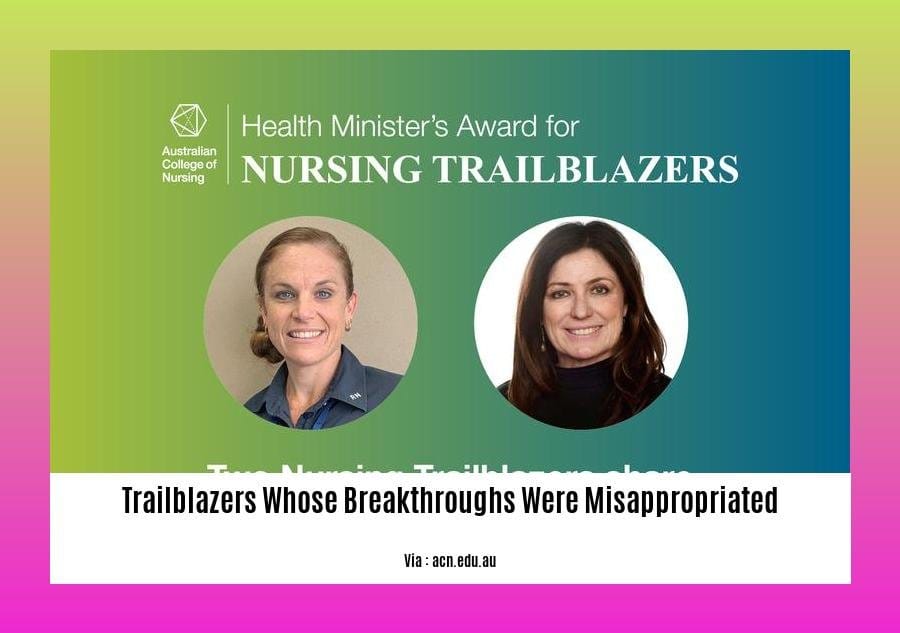
FAQ
Q1: How were the breakthroughs of these trailblazers misappropriated?
A1: The misappropriation of the trailblazers’ breakthroughs involved various methods, such as unauthorized use, copying, or modification of their inventions or ideas. These acts often occurred without proper attribution, leading to the loss of recognition and potential financial benefits for the original creators. Misappropriators might have exploited legal loopholes, taken advantage of power dynamics, or simply disregarded intellectual property rights.
Q2: What were the consequences of misappropriated breakthroughs?
A2: The misappropriation of breakthroughs had severe consequences for the trailblazers. They were denied rightful credit and recognition for their contributions, which hindered their professional advancement and legacy. Financially, they often missed out on potential profits and royalties, impacting their economic well-being. Moreover, the misappropriation demoralized the trailblazers, discouraged innovation, and slowed the progress of their respective fields.
Q3: How can we prevent future misappropriation of breakthroughs?
A3: Preventing future misappropriation of breakthroughs requires a multifaceted approach. Stronger legal frameworks and enforcement mechanisms are crucial to protect intellectual property rights and deter potential misappropriators. Additionally, raising awareness about the issue, educating innovators about their rights, and promoting ethical practices in research and development can help create a culture that values originality and safeguards the rights of creators.
Q4: What can be done to recognize and compensate for past misappropriation?
A4: Recognizing and compensating for past misappropriation involves acknowledging the contributions of trailblazers, correcting historical records, and providing appropriate reparations. This may include financial compensation, public apologies, or initiatives that honor their legacy and promote their work. Legal advocacy, historical research, and community engagement are essential in bringing these injustices to light and seeking redress for the affected trailblazers and their descendants.
Q5: Why is it important to uncover and share these stories of misappropriation?
A5: Uncovering and sharing the stories of misappropriation is crucial for several reasons. It sheds light on the historical injustices faced by trailblazers, challenges dominant narratives, and inspires present and future innovators. By acknowledging these wrongs, we can foster a more inclusive and equitable innovation ecosystem that values diversity, recognizes contributions, and protects the rights of all creators.
